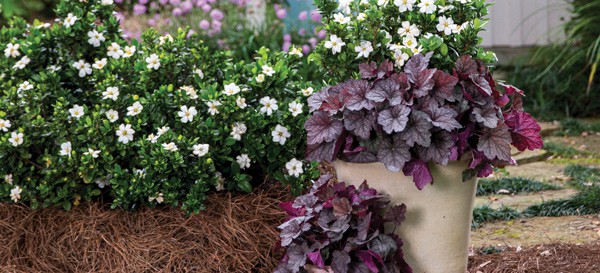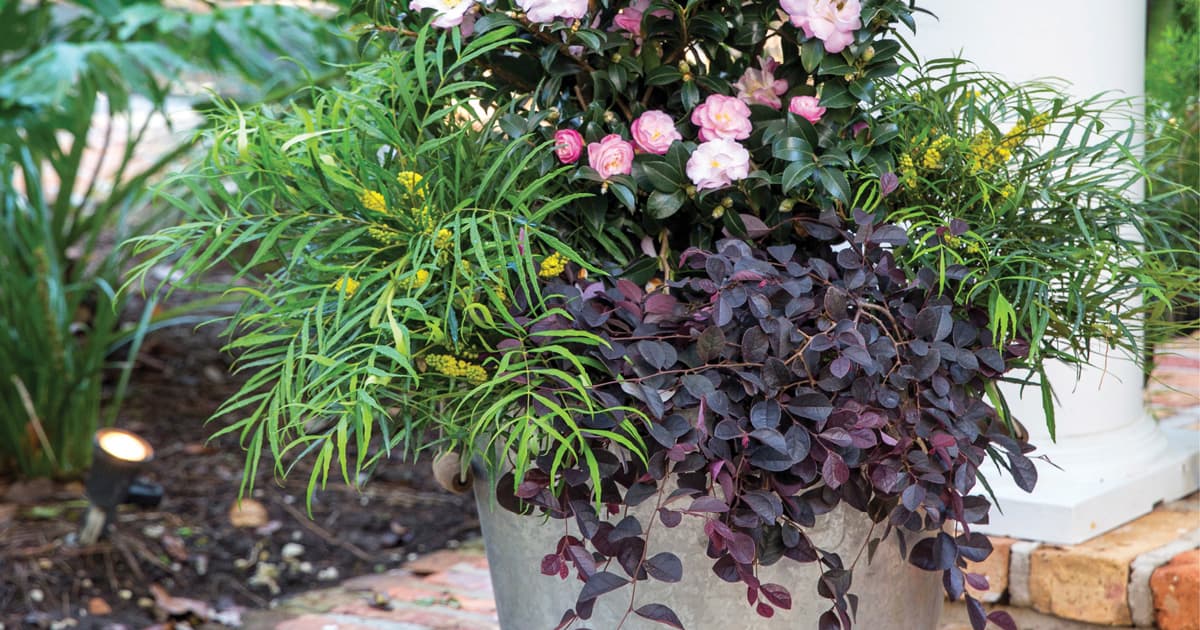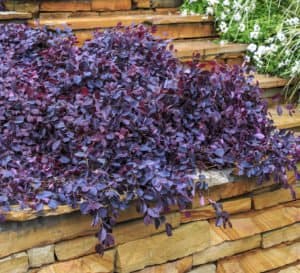By Kimberly Toscano
Container plantings are most commonly employed to embellish paved areas of the landscape, mainly porches and patios. While these two spaces share many similarities, they are in fact quite distinct in terms of their functional roles. While modern architecture has certainly altered the outward appearances of these garden rooms, their purpose remains unchanged and plays a role in the design of container plantings for each space.
Functionality and Plant Selection
Porches
In the most traditional sense, the porch is an area of transition outside the entrance to a building. The simplest porch is comprised of a small pad, covered or uncovered, outside the doorway. On the complex side are verandas and porticos, often stretching the length of the building’s façade or wrapping its sides.

Plantings on a porch typically serve the purpose of adornment, adding color and interest to a home’s entryway. Plant selections reflect the architectural style and character of the house, as well as the homeowner’s personality. Porch plantings welcome guests and offer a first glimpse into the lives of the homeowners. Pair flashy foliage and lasting blooms for stylish porch containers. Try combining ‘Twilight’ Heucherella and Jubilation™ Gardenia for an elegant first impression.

The size and style of a porch will also reflect the types of container plantings enlisted. Porches wrapped with banisters and rails are often decorated with hanging baskets and containers set against the house’s wall. Repeat trailing bloomers like Red EnduraScape™ Verbena or Purple Pixie® Dwarf Weeping Loropetalum in both locations, as light allows. Open porches may utilize containers as a way to define edges and delineate space. For an upright element, ‘Angyo Star’ Fatshedera shines in mixed containers.
Patios
Patios tend to lie in the private area of a landscape and serve the roles of dining or recreation. Paved courtyards and wooden decks fall into this category. Patios often include garden beds on one or more sides as well as a diversity of container plantings.

On the patio, plantings serve many different roles from providing privacy to defining distinct rooms. Whether in the ground or potted up, Oakland™ Holly makes a stately green wall. For more open spatial definition, turn to the vase-like form of Delta Flame™ Crapemyrtle or a low hedge of Baby Gem™ Boxwood.

Patio plantings also have a decorative role, connecting to the broader landscape style. And this is where personality really shines. Gardeners passionate about cooking often incorporate herbs like Chef’s Choice®Culinary Rosemary and other edibles into patio plantings, while hummingbird enthusiasts focus on flowers. Ever Amethyst™ Agapanthus and Bells of Fire™ Tecoma are two excellent hummingbird favorites that perform beautifully in containers.
Covered or Uncovered: A Look at Light
One of the biggest factors affecting plant selection for these areas is light intensity. Porches are traditionally covered, but modern design is breaking away from these norms. Likewise, today’s patios include a variety of coverings from pergolas to roof extensions, transforming once sunny spaces into shady oases.

Covered porches and patios tend to vary in light from deep shade to full or partial sun along the edges. Structures on the south side of a home will experience more intense light (and heat) along its edges, while those facing north will include more shade. Adjust plant selections accordingly, taking into account additional shade thrown by large trees. Walk the line between sun and shade with adaptable plants like Miss Lemon™ Abelia and Obsession™ Nandina.

The interiors of covered patios and porches are characteristic of deep to bright shade. These are great places to showcase shade-loving evergreen beauties like ‘Angyo Star’ Fatshedera and ‘Soft Caress’ Mahonia.










_300x273-300x273.jpg)



